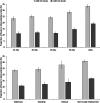Device-measured physical activity and sedentary time in a national sample of Luxembourg residents: the ORISCAV-LUX 2 study
- PMID: 36581944
- PMCID: PMC9798598
- DOI: 10.1186/s12966-022-01380-3
Device-measured physical activity and sedentary time in a national sample of Luxembourg residents: the ORISCAV-LUX 2 study
Abstract
Background: Existing information about population physical activity (PA) levels and sedentary time in Luxembourg are based on self-reported data.
Methods: This observational study included Luxembourg residents aged 18-79y who each provided ≥4 valid days of triaxial accelerometry in 2016-18 (n=1122). Compliance with the current international PA guideline (≥150 min moderate-to-vigorous PA (MVPA) per week, irrespective of bout length) was quantified and variability in average 24h acceleration (indicative of PA volume), awake-time PA levels, sedentary time and accumulation pattern were analysed by linear regression. Data were weighted to be nationally representative.
Results: Participants spent 51% of daily time sedentary (mean (95% confidence interval (CI)): 12.1 (12.0 to 12.2) h/day), 11% in light PA (2.7 (2.6 to 2.8) h/day), 6% in MVPA (1.5 (1.4 to 1.5) h/day), and remaining time asleep (7.7 (7.6 to 7.7) h/day). Adherence to the PA guideline was high (98.1%). Average 24h acceleration and light PA were higher in women than men, but men achieved higher average accelerations across the most active periods of the day. Women performed less sedentary time and shorter sedentary bouts. Older participants (aged ≥55y) registered a lower average 24h acceleration and engaged in less MVPA, more sedentary time and longer sedentary bouts. Average 24h acceleration was higher in participants of lower educational attainment, who also performed less sedentary time, shorter bouts, and fewer bouts of prolonged sedentariness. Average 24h acceleration and levels of PA were higher in participants with standing and manual occupations than a sedentary work type, but manual workers registered lower average accelerations across the most active periods of the day. Standing and manual workers accumulated less sedentary time and fewer bouts of prolonged sedentariness than sedentary workers. Active commuting to work was associated with higher average 24h acceleration and MVPA, both of which were lower in participants of poorer self-rated health and higher weight status. Obesity was associated with less light PA, more sedentary time and longer sedentary bouts.
Conclusions: Adherence to recommended PA is high in Luxembourg, but half of daily time is spent sedentary. Specific population subgroups will benefit from targeted efforts to replace sedentary time with PA.
Keywords: Adults; Behaviour; Correlates; Demographic factors; Health status; Inactivity; Lifestyle; Obesity; Sitting; Socioeconomic factors.
© 2022. The Author(s).
Conflict of interest statement
The authors declare that they have no competing interests.
Figures



References
Publication types
MeSH terms
LinkOut - more resources
Full Text Sources
Medical

